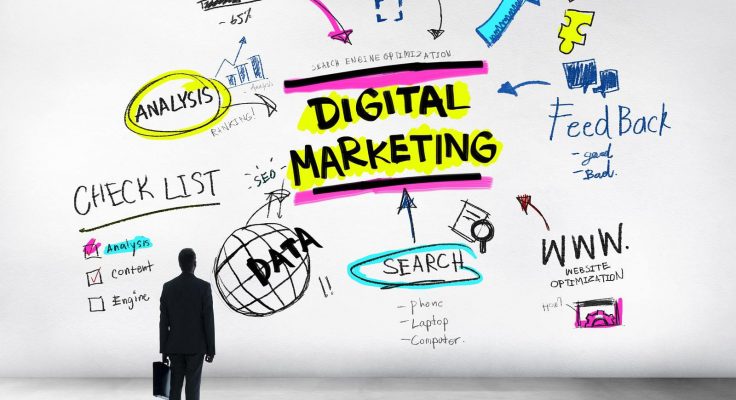7 Costly Mistakes You Need To Avoid in Digital Marketing
It is undeniable that digital marketing is the best way to spread word about your brand.
It is affordable, has a simple learning curve, and convenient.
Both small and large brands recognise the potential of digital marketing. Hundreds of thousands of companies with an online presence have seen success in earning their target audience’s trust.
With a well-planned website that is easy to navigate with compelling content, they have increased and even automated their sales process, too.
There is no question that many businesses will invest premiums in digital marketing.
The promised results are often achieved.
However, it can also be a huge profit sinkhole if it is not used efficiently.
First-time digital marketers often commit costly mistakes.
If it is your brand’s first content or social media campaign, make sure to keep testing on a small scale before implementing your biggest campaigns.
Make sure to avoid any mistakes that can cost you hundreds of thousands to even millions of pounds in the process.
The Cost of an Average Campaign
A digital marketing relies on multiple aspects to reach out to their customers and create loyalist and advocates. All these aspects develop continuously as the business scales its activities.
Content is the heart of any digital marketing campaign.
If you plan to create a full-fledged content marketing campaign, then you might spend from £4,500 – £50,000 according to Vertical Measures.
The costs address every step of the content marketing process including content research, development, optimisation, and promotion.
Content comes in different forms
You can use infographics, videos, curated content, resource pages, articles, and even interactive content in the form of Flash media or videogames.
Third-party developers may charge you differently for each type.
However, content marketing is just one aspect of the digital marketing campaign.
Social media marketing campaign is another.
According to The Content Factory, social media campaigns and management can cost about $1,000 to $20,000 on a monthly basis.
That’s truly a lot to spend.
However, spending goes mostly to data analytics tools, social media PPC campaigns such as Facebook Ads, and audience research.
Twitter marketing alone costs $1,000-2,500 for an advertising campaign coupled with organic social media strategies.
Facebook advertising can cost $2,500-$9,000 to increase its outreach and reach the interest of new audiences.
So, if your digital marketing campaign fails, you can imagine the amount of loss you will need to recoup.
Indeed, better safe than sorry.
To start off, here are some basic errors that marketers can avoid from the get-go.
Three Common Marketing Errors Everyone Carelessly Commits
First-time marketers forget to consider three things when implementing their first social media advertising campaign.
Lack of Research: Imagine that you spoke only in English.
Then other party spoke Spanish without any knowledge of the English language.
You can imagine that talking to them will be difficult.
Some first-time marketers spend so much on digital marketing campaigns but forget to consider whether the social media campaign’s language and content is appropriate for their target.
It’s a basic error, but one that is too often committed.
Falling Off the Trend: Most marketers that focus on riding social media and content trends become prone to committing brand insensitivity.
One example is Qantas Airlines.
Qantas’ blunder came from wrong timing.
When it implemented the #QantasLuxury campaign, it was intended to share the top-notch experience of passengers.
Sadly, because of a labour dispute that delayed multiple flights, the reverse happened.
If anything, make sure that the trends you ride will carry your brand to new and positive heights.
Well-Researched But Poorly-Executed Content: As mentioned earlier, content is the heart of any digital marketing campaign.
But focusing your development budget on research and leaving the data bare-boned is not the way to go for it.
To achieve a fulfilling and unique experience, your audience must quickly digest and understand the data you present to them.
Doing so requires research on the right kind of design, language, and presentation to achieve this.
The Benefits of an Excellent Digital Marketing Campaign
Companies are willing to spend highly for digital marketing campaigns because of its returns.
Now, you’ve probably read and heard plenty of success stories.
Here are some great examples of how well-executed campaigns can give great returns to businesses.
American Express’ Open Forum campaign invited guest authors from different industries to share business knowledge on a single website.
The content-rich mega website ranked highly in search engines and minimised the production cost of the entire campaign.
Domino’s Pizza continues to push the boundaries of digital marketing by allowing people to order pizza through a simple tweet, using the #EasyOrder hashtag, and a bot that asks you a simple Yes or No question to send pizza straight to you.
These excellent digital campaigns gave the projects huge search engine attention thanks to their optimisation and excellent content.
At the same time, it also engaged customers and gave them a unique yet simplified experience in the process.
You can assume that an excellent marketing campaign is one that is simple and introduces a seamless yet fulfilling experience for your customers.
These two examples did not commit any errors listed below.
Seven Digital Marketing Mistakes You Need to Avoid
1. Failing to Set Initial and Realistic Goals
Every marketing strategy needs a goal.
Do you want your social media campaign to raise awareness about your brand towards interested customers?
Is your content marketing campaign focused on driving more conversions to your website?
Whichever your goal is, it is important to have it down on paper before you proceed.
You can view them as your “umbrella” goals. These general goals will have sub-steps that you can take to make them successful.
For example, if you are focused on creating content for audiences that want to know more about your brand’s offers, then you can create videos demonstrating your products or your services.
The sub-step to drive the initial audience’s attention is to share enough details from your studies that will urge them to consider your services.
If you want to improve your visibility in social media, then identifying your target market’s interest and media that makes it convenient to digest information is imperative.
For example, if you’re a food business, you can share your brand’s offers outdoing existing food qualities or deals with factual evidence.
Having goals allows you to measure your efforts and identify holes that you can mend to make your future campaigns better.
2. Depending Immensely on Social Media Advertising and Outreach
Social media is a powerful publishing tool.
It allows you to reach out to consumers. In addition, you even get instant feedback about the content you post online.
It is no surprise that many businesses have focused their digital marketing campaigns immensely on social media marketing.
As mentioned earlier, a social media campaign can cost up to $1,000 to $20,000. If done effectively, it can generate huge profits. According to Statista, in 2017, US social marketing campaigns have driven $19.31 billion in profits.
Having a social media presence is important. However, focusing your entire digital marketing campaign through social media alone leaves plenty of missed opportunities for better conversion rates.
For example, your social media updates get many reactions from audiences because it is about your products and services receiving timely updates.
However, if you never post anything related to case studies and other how-to helpful posts on your social media account, your new audiences might put less confidence in your brand.
Content marketing focuses on telling your brand’s capabilities. Linking back to your website through social media allows your visitors to find further content that pushes them down your sales funnel.
Therefore, your social media’s awareness-generating updates play a vital role, but it is pointless if not integrated with overall sales strategy.
3. Poor Customer Relationship Management
Customers are willing to pay more for a unique and seamless experience. They are intent on spending on solutions that actually work. They’re tired of big-name companies and their troubled customer help departments.
Your customer relationship management (CRM) gives customers a case-by-case basis solution. It is also an opportunity to create positive experiences that can create conversions
Most businesses overlook customer service especially if they’re convinced they have an excellent brand offer.
They invest plenty into digital marketing campaigns to raise awareness and use content to drive sales as researching audiences become convinced that the business’ solution is the best one in the market.
However, when things go amiss with customer experience, they would scramble their employees without experience in handling the situation to talk to their consumers.
Fortunately, CRM platforms exist. They allow any business of any scale to manage their interaction with consumers, view the progress of their troubles, and find a way to resolve them while maintaining a deadline.
By delivering a splendid resolution to a consumer’s problem, businesses can gain their confidence.
In fact, because of the fulfilling solution, the consumer may even rave about the business being truly helpful and concerned about their consumers.
4. Using a ‘Dinosaur’ Website
Optimizing your website is an imperative task especially if you haven’t updated it for over one year.
It is not because search engines have changing algorithms every few years.
The fact is that consumers want a seamless experience with your website.
For example, Paint.net is a free-to-use image processing tool. Its download site shows you images of how it works. You might even consider using it because it’s endorsed by several freeware aggregating sites such as Softpedia and software review magazine PC World.
Comparing this website to Pixlr’s gorgeous and easy to navigate landing page, you may consider using the online tool more than Paint. net because you won’t need to download and it has everything you need.
An old and tired website, especially one with low-res images, slow loading speed and poor navigation, drives away consumers. This is known as bounce rates in SEO terminology. Consumers will likely “bounce” to other websites because of a poor site experience.
5. Intermittent Testing and Poor Data Interpretation
Big data is an important tool for today’s digital marketers.
It allows you to measure campaign performance and adjust certain parameters based on data interpretation to create a better audience experience.
Bad data will tell a bad story. Therefore, it will lead to bad or unnecessary improvements in your campaign.
For example, taking page views can be interpreted that your outreach is improving.
However, it is not enough for your business to decide adding new content. In fact, page view metrics is useful if you’re selling ad space on your website.
The data you need is if your consumers took action. A website’s goal is to create action. If an audience signed up for your newsletter or completed a contact form, then that data is vital and actionable on your behalf.
Another way to interpret data poorly: you saw a 30% conversion rate increase from your previous website upgrades.
Indeed this is good news. However, you only have three page views to support this particular conversion rate. Therefore, taking any form of interpretation for this data would lead to bad digital marketing developments.
6. Focusing on ‘Telling’ Rather Than ‘Doing’ (Content vs. Copy writing)
Copywriting focuses on telling your business’ capabilities.
Meanwhile, content is focused on using data and case studies to show how your business does its job with the results to prove it.
Some businesses mistake copywriting as a great tool to attract audience attention. They keep “pushing” the brand’s offers to their consumers.
However, audiences can always research about a business. If they find content from you that contains objective data, even from different sources, then they may likely want to use your services.
If all they find is your brand’s claims on certain cases without any data or results to back them up, then they will likely consider other businesses with these particular studies and data because it is evidence that they have used their solutions in the process.
Focus on data instead of telling customers what to think. In an age where information is free to access, focusing on value-adding and evidence-based content is most vital for brand development.
7. Failing to Incorporate The Needs of Audience
Businesses can create compelling content and data-backed research.
Indeed, some have seen great success using this approach in their digital marketing strategy.
However, if the audience finds the research’s topics irrelevant to the brand, then they will have no use for that information.
For example, if a plumbing company performed a data-backed research regarding the efficiency of their products and services for construction companies, then they are leaving out residential homeowners who want to know if they can deliver great results for them as well.
If you want to incorporate your audience’s needs, then you need to know your target audience very well, even if it takes demographic research to the next level.
Conclusion
Digital marketing is a rewarding tool for many business if it is utilized effectively. By avoiding all these troubles early, you will definitely see huge conversions that can improve your business’ revenues in less than a year.



